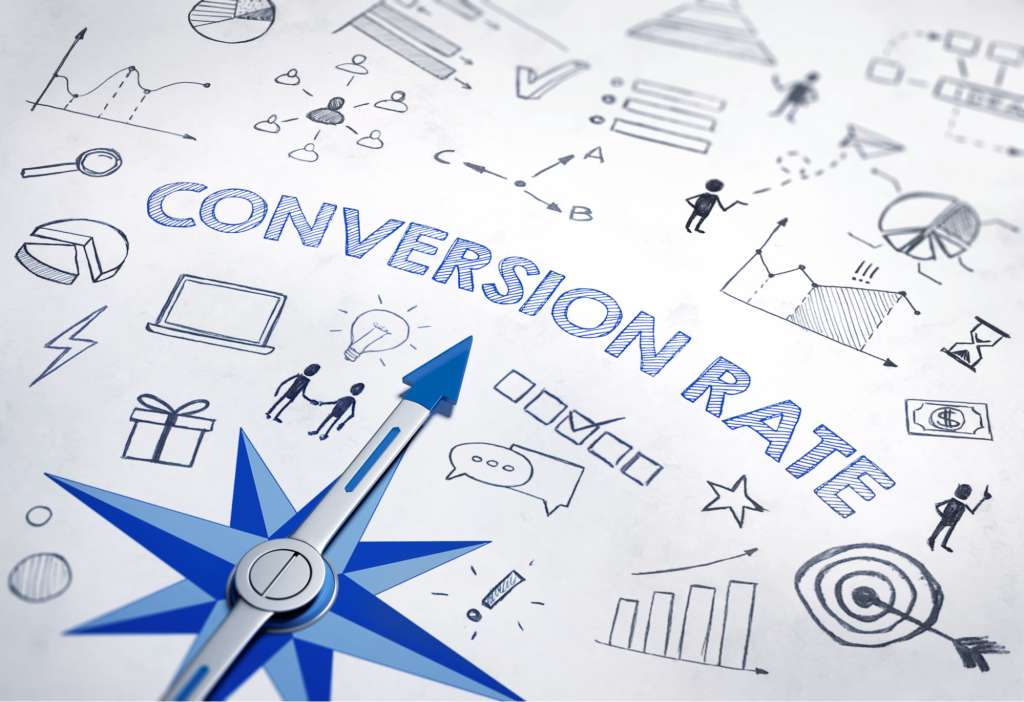Website conversion rates are a key metric for any online business. They measure the percentage of visitors to a website who take action, such as making a purchase or signing up for a newsletter. A high conversion rate indicates that a website effectively converts visitors into leads or customers.
Quick Links
In today’s competitive marketplace, businesses need to make the most of every website visitor in order to survive and thrive. By optimizing your website for conversion rates, you can ensure that more visitors take the desired actions on your site. Whether that means completing a purchase, signing up for a newsletter, or filling out a form, conversion rate optimization can help you achieve your business goals.
In addition to increased sales and leads, conversion rate optimization can also provide valuable insights into your customers’ needs and preferences. By understanding what drives visitors to convert, you can adjust your marketing strategy accordingly and continue to improve your results over time. Here are five tips for optimizing your website’s conversion rates:
1. Increase the loading speed of your website
Your website’s conversion rate is impacted by loading speed. According to studies, even a one-second delay in page loading can significantly decrease conversion rates. This is because potential customers are more likely to abandon a slow-loading website in favor of one that loads quickly.
There are several factors that might influence a website’s loading speed. This includes the size and number of images, the amount of code, and the hosting server. However, there are some things that may be done to speed up loading times.
First, try to reduce the size of your images. This can be achieved by the use of compressing software or by lowering the resolution. Second, try to streamline your code as much as possible. This means removing unnecessary characters and spaces. Finally, make sure your hosting server is able to handle the amount of traffic you are receiving. If it is overloaded, this can cause delays in loading times.
2. Optimize your website content for better search engine visibility
If you want your website to be successful, it’s important to make sure that you optimize it for search engines. Your website’s ranking in search engine results pages (SERPs) is one of the key factors that affect your conversion rates. It is significant in determining how much traffic you get and how many visitors convert into customers or clients.
Various things can be done to optimize your website for better search engine visibility, which will, in turn, improve your website’s conversion rates. First, make sure that all of your website’s content is keyword-rich and relevant to your target audience. You must also create compelling meta descriptions and title tags that accurately reflect the content on each page.
Next, provide clear calls to action (CTAs) throughout your website. This could be in the form of a button or link that encourages visitors to take a specific action. Finally, use external linking strategies to promote your website to a wider audience.
3. Use social proof to build trust with potential customers
Social proof is a powerful weapon in the conversion rate optimization arsenal. It essentially means using testimonials, reviews, and other forms of social proof to build trust with potential customers. When visitors see that others have had success with your product or service, they are more likely to convert themselves.
You may utilize social proof on your website in a variety of ways. One option is to showcase customer testimonials prominently on your homepage or product pages. You can also include reviews from third-party sites like Yelp or Google. Additionally, you can use social media to your advantage by sharing customer success stories and positive reviews.
4. Improve website design for a better user experience
Creating a great user experience on your website starts with the design. After all, if potential customers can’t navigate your website or find what they’re looking for, they will not convert. You should carefully craft every element on the page to provide your visitors with the most seamless and intuitive experience.
Improve website design for a better user experience means using high-quality images and videos, a captivating logo, and easy-to-use navigation. If you are serious about creating a high-quality website, you can work with professional logo design companies, media production studios, and web design firms to create a top-notch website design.
5. Use persuasive copy to drive conversions
Your website’s copy is amongst the most significant elements in driving conversions. After all, it’s the words on the page that will ultimately persuade someone to take action. Whether you’re writing product descriptions, calls to action, or landing pages, your goal should be to create persuasive copy that convinces visitors to convert.
There are several things to remember when it comes to writing persuasive copy. First, focus on creating headlines that grab attention and make people want to read more. You must also use strong, active language that is clear and concise. And finally, focus on the benefits of your product or service rather than the features.
If you’re looking to improve your website’s copy to the next level, one of the best things you can do is to invest in professional copywriting. A professional copywriting agency will be able to help you create compelling, persuasive copy that speaks to your target audience and drives conversions.
Final Words
There are several conversion rate optimization strategies you may employ to boost the performance of your website. These five tips above are just a fraction of the numerous ways you may increase conversions. It’s significant to experiment with different tactics and see what works best for your business. You can find the perfect formula for driving conversions with a little trial and error.

